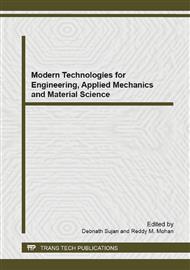p.86
p.91
p.97
p.102
p.107
p.112
p.117
p.122
p.127
Analysis of Concurrent Brake Application for Underbone Motorcycle
Abstract:
The application of single front wheel brake can yield large deceleration on underbone motorcycle. However, the motorcycle motion potentially exposed to the nosedive effect during this application. Therefore, in order to avoid this issue, the application of concurrent brake are required. Hence, this research was carried out to understand the basic braking performance for underbone motorcycle and elucidate the influenced of concurrent braking application involving the front and rear brake component. A theoritical study was carried out in this work through the derivation of motion equation for underbone motorcycle. The preliminary results showed that the total brake force and the brake force component acting on the front wheel had increased linearly with its deceleration intensity. Further study showed that in order to achieve higher safety range, the brake force applied on the front wheel should be at least 70% higher than the rear brake force intensity. This is probably due to the weight transferred condition during the underbone motorcycle braking.
Info:
Periodical:
Pages:
107-111
Citation:
Online since:
June 2014
Authors:
Price:
Сopyright:
© 2014 Trans Tech Publications Ltd. All Rights Reserved
Share:
Citation:


